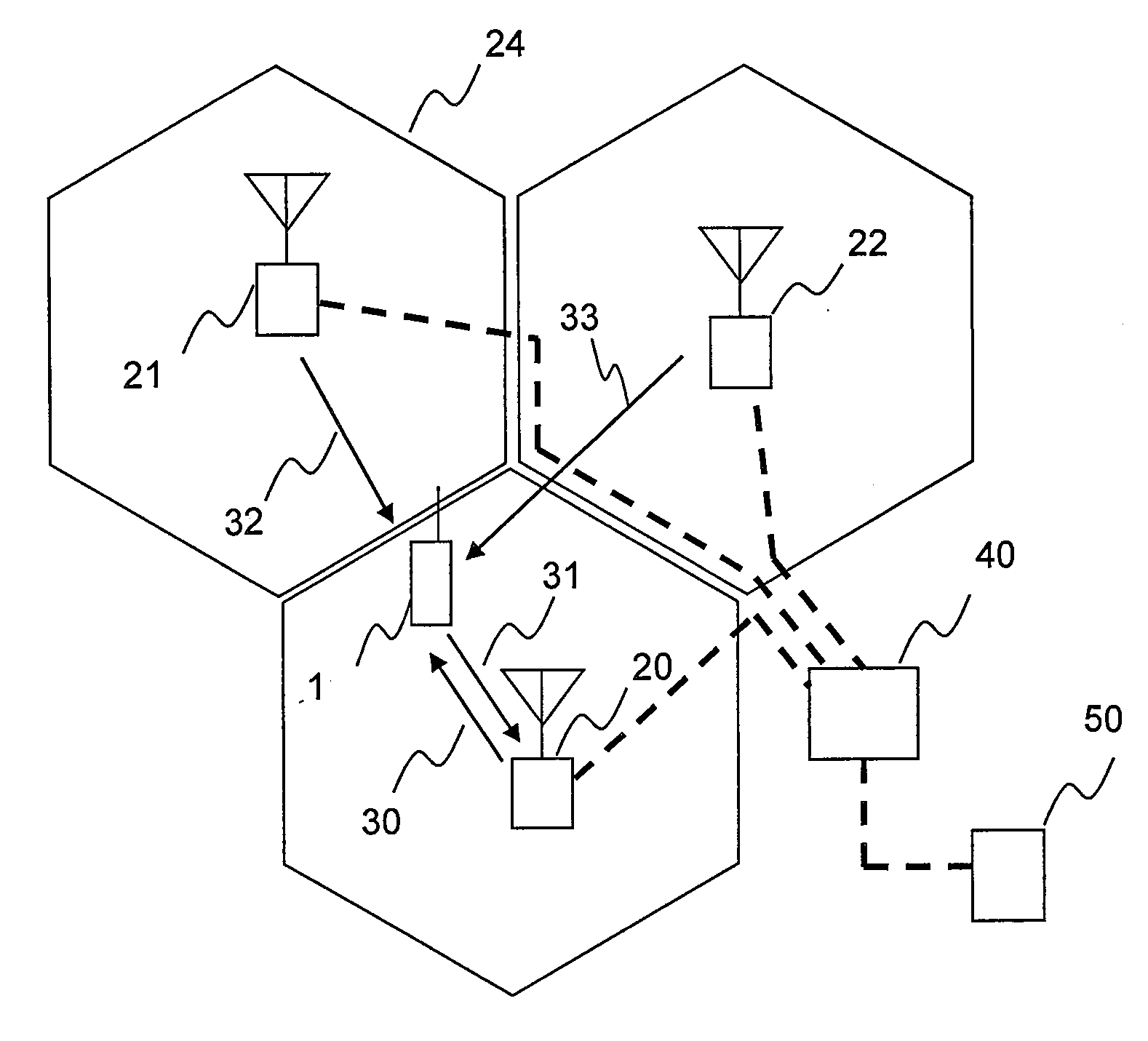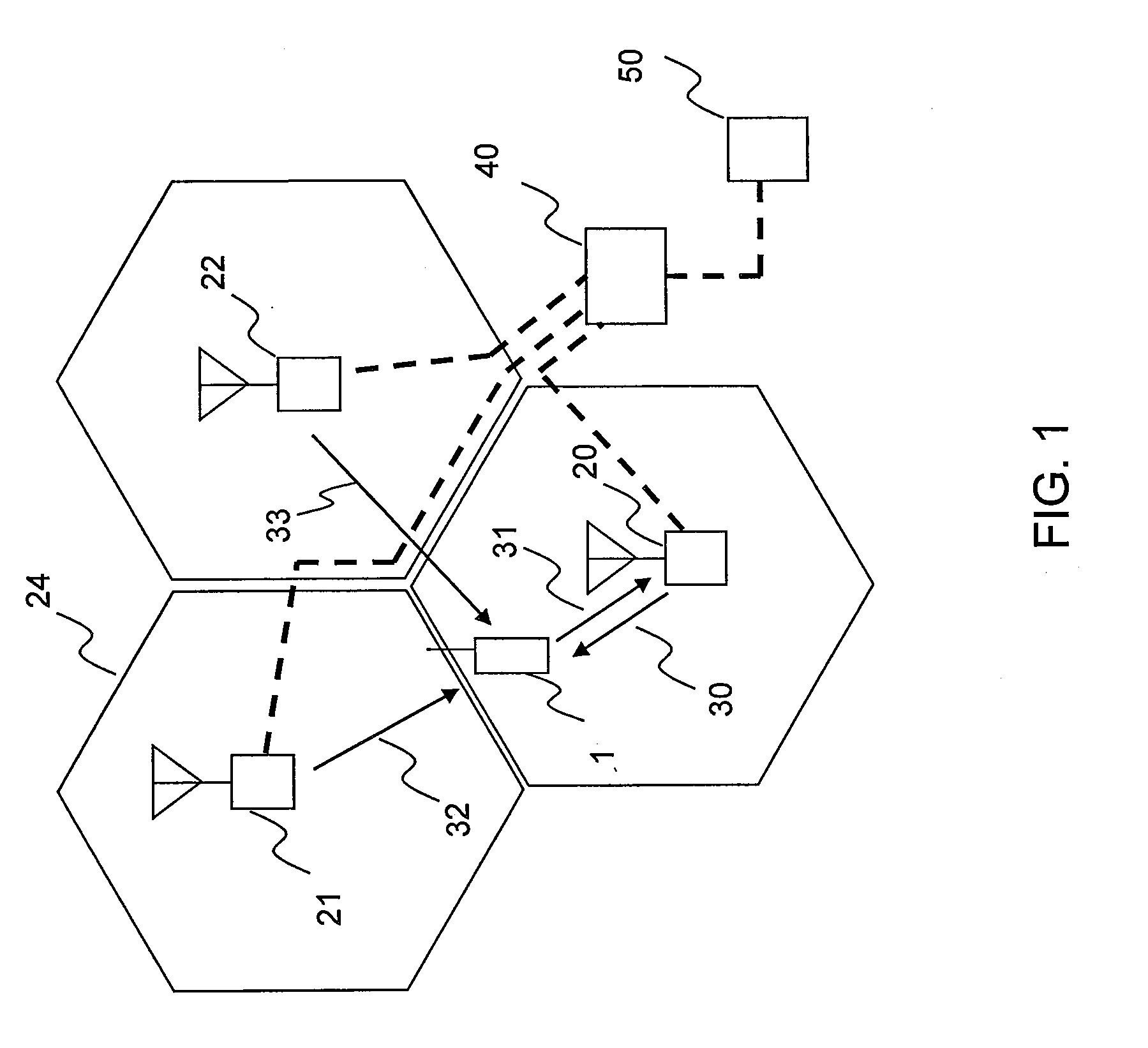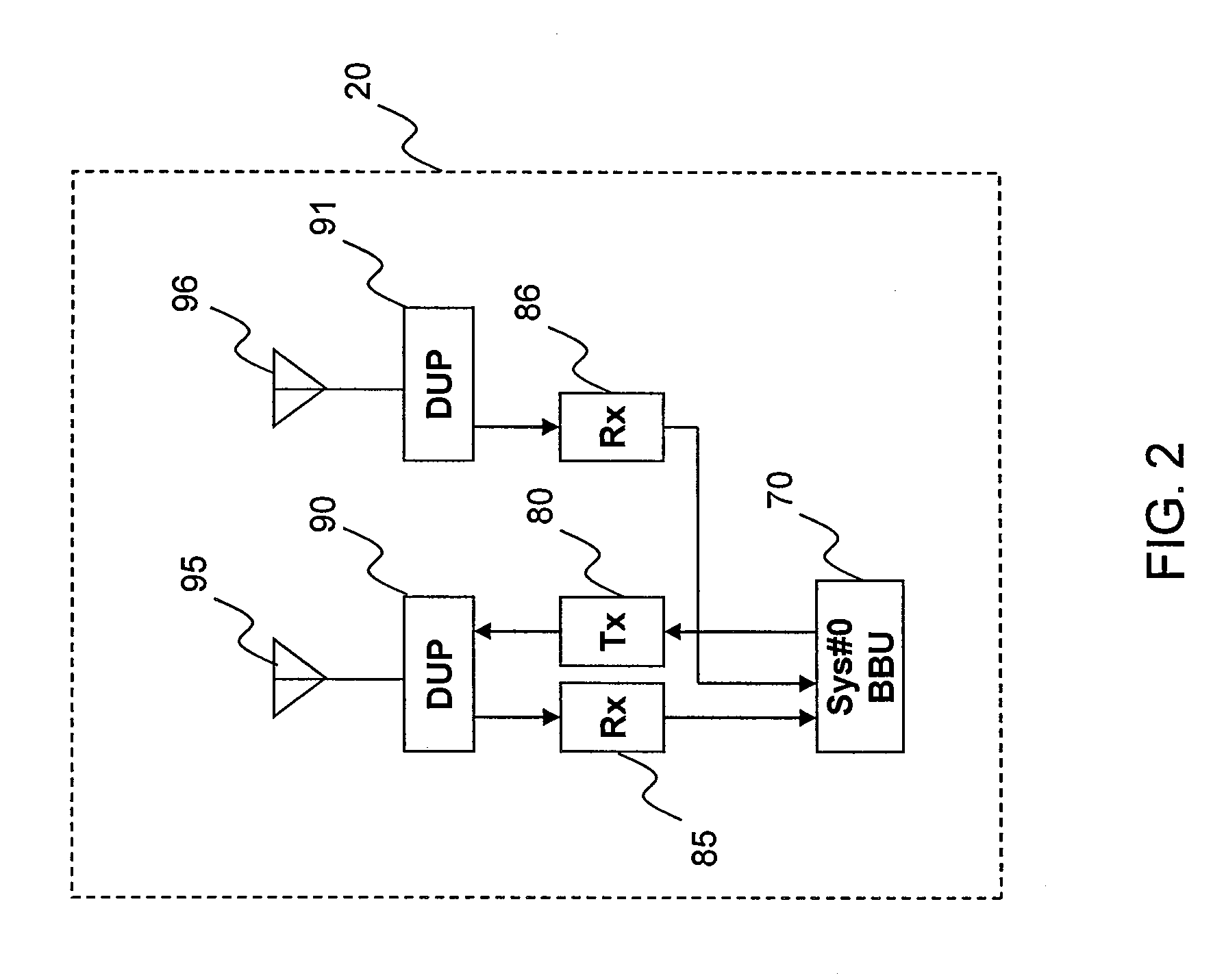Base station apparatus and interference reducing method
a base station and interference reduction technology, applied in the field of mobile radio communication technologies, can solve the problems of weak interference in adjacent cells, inability to specify the same radio wave reaching range in some cases, and inability to achieve transmission diversity gain, so as to reduce interference in adjacent cells and increase the throughput of all terminals
- Summary
- Abstract
- Description
- Claims
- Application Information
AI Technical Summary
Benefits of technology
Problems solved by technology
Method used
Image
Examples
Embodiment Construction
[0044]FIG. 1 is a view showing an example structure of a mobile communication system (or a radio communication system).
[0045]Base station apparatuses (hereinafter called just base stations sometimes) 20 to 22 communicate with a core apparatus 50 to connect to a core network through the core apparatus 50. A signal sent from the core apparatus 50 is input to the base station apparatus 20 through a switch 40. The base station apparatus 20 converts the signal sent from the core apparatus to a high frequency signal and sends it to a mobile terminal (or a radio terminal) 1 by a radio signal 30. The mobile terminal 1 receives the radio signal 30 sent from the base station apparatus 20 and performs signal processing to convert the radio signal 30 to information, thereby communicating with the core apparatus 50.
[0046]The mobile terminal 1 converts information generated therein to a high frequency signal and sends it to the base station apparatus 20 by a radio signal 31. The radio signal sent...
PUM
 Login to View More
Login to View More Abstract
Description
Claims
Application Information
 Login to View More
Login to View More - R&D
- Intellectual Property
- Life Sciences
- Materials
- Tech Scout
- Unparalleled Data Quality
- Higher Quality Content
- 60% Fewer Hallucinations
Browse by: Latest US Patents, China's latest patents, Technical Efficacy Thesaurus, Application Domain, Technology Topic, Popular Technical Reports.
© 2025 PatSnap. All rights reserved.Legal|Privacy policy|Modern Slavery Act Transparency Statement|Sitemap|About US| Contact US: help@patsnap.com



